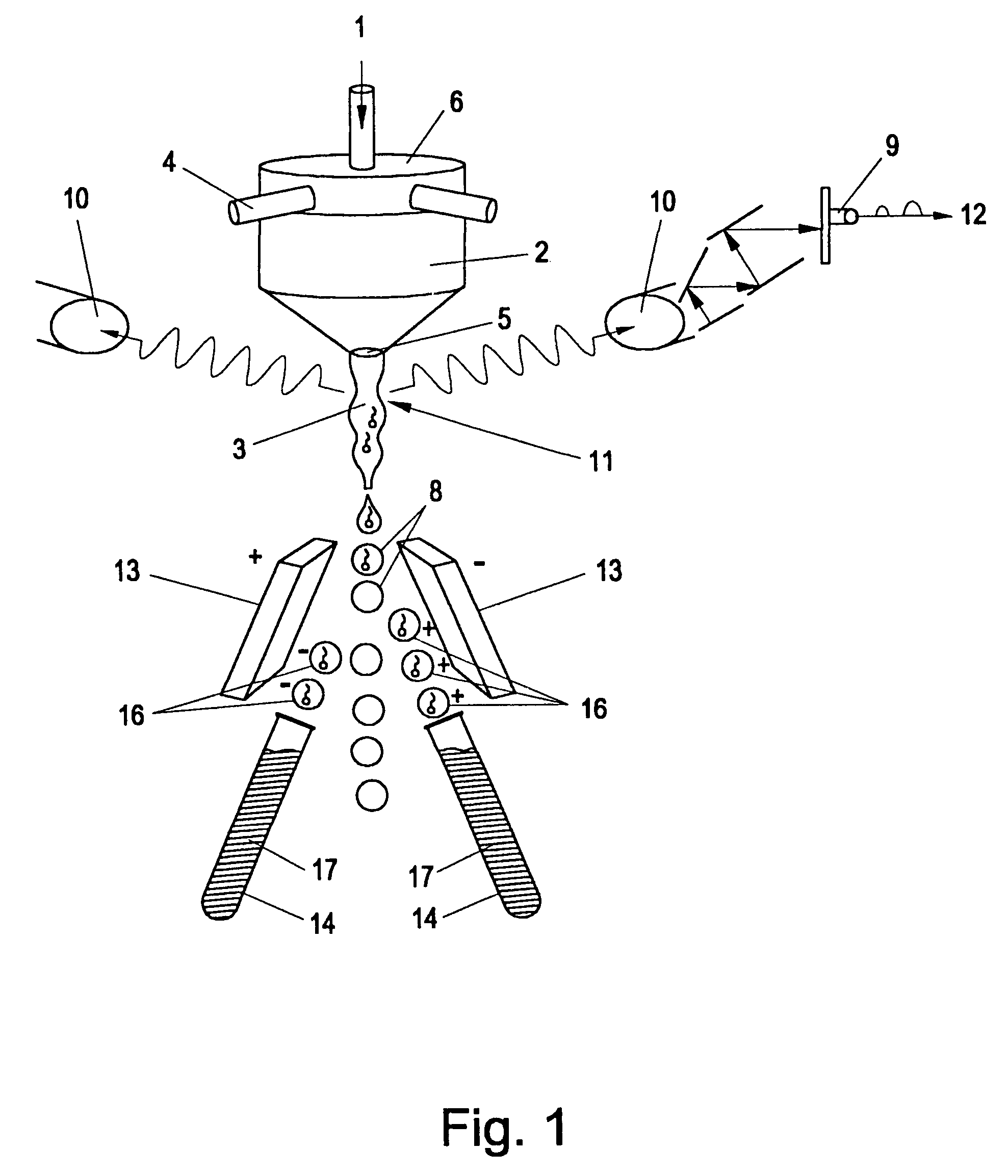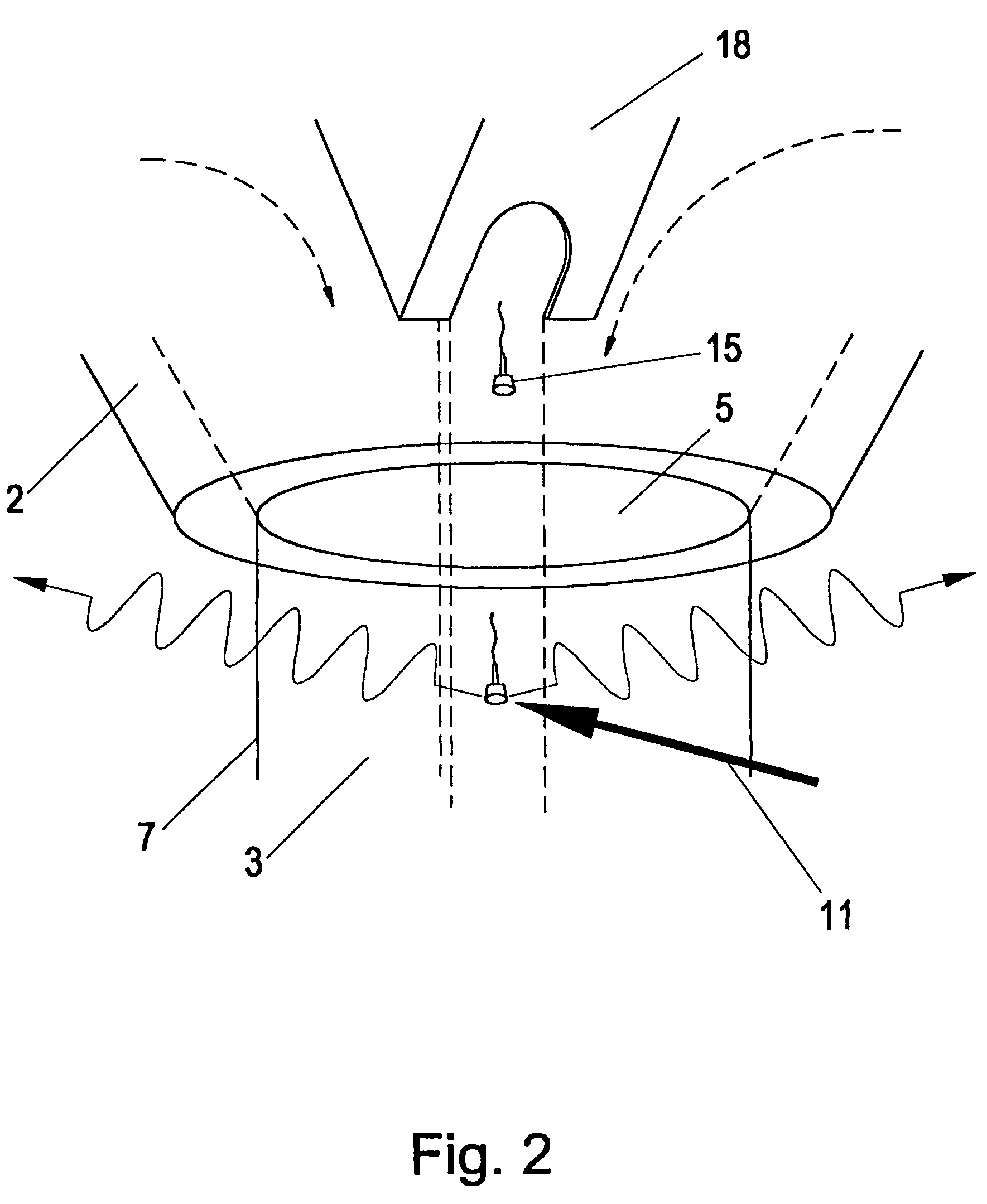Method of establishing an equine artificial insemination sample
a technology of artificial insemination and equine, which is applied in the field of artificial insemination of equines, can solve the problems of equine species in some respects being more difficult, affecting reducing fertility, so as to improve the sorting of equine sperm cells and improve the quality of equine sperm, the effect of high speed and low stress
- Summary
- Abstract
- Description
- Claims
- Application Information
AI Technical Summary
Benefits of technology
Problems solved by technology
Method used
Image
Examples
Embodiment Construction
[0029]As will be seen, the basic concepts of the present invention can be combined and embodied in a variety of ways. The invention involves commercially practical low dose, sexed equine artificial insemination and the results. For flow cytometry separation techniques, the invention also involves both improved flow cytometer systems as well as systems for the creation of sex-specific equine sperm samples which may be used in equine artificial insemination and the equids produced by such techniques. It discloses overall processes through which high success rates are possible even in commercial equine environments. Furthermore, the techniques are disclosed in a general fashion so that they may be applied to specific systems and applications once the general principles are understood. While device enhancements are disclosed it should be understood that these enhancements not only accomplish certain methods but also can be varied and combined in a number of ways. Importantly, as to all ...
PUM
| Property | Measurement | Unit |
|---|---|---|
| pressure | aaaaa | aaaaa |
| volume | aaaaa | aaaaa |
| volume | aaaaa | aaaaa |
Abstract
Description
Claims
Application Information
 Login to View More
Login to View More - R&D
- Intellectual Property
- Life Sciences
- Materials
- Tech Scout
- Unparalleled Data Quality
- Higher Quality Content
- 60% Fewer Hallucinations
Browse by: Latest US Patents, China's latest patents, Technical Efficacy Thesaurus, Application Domain, Technology Topic, Popular Technical Reports.
© 2025 PatSnap. All rights reserved.Legal|Privacy policy|Modern Slavery Act Transparency Statement|Sitemap|About US| Contact US: help@patsnap.com


